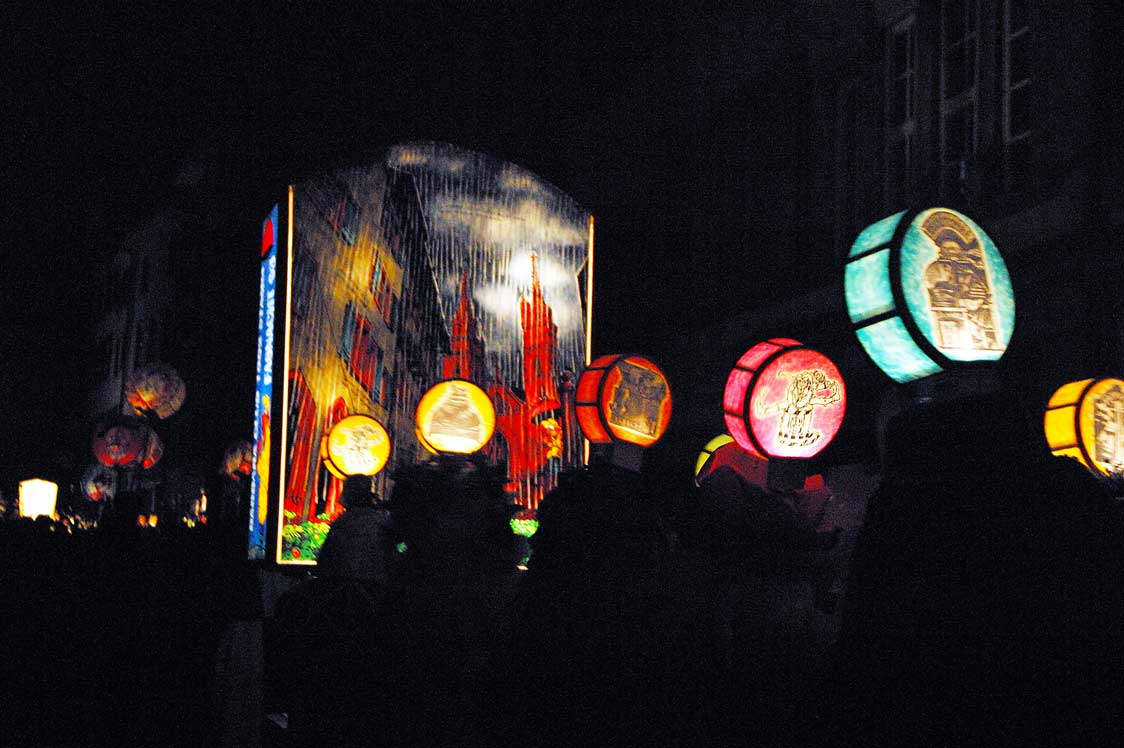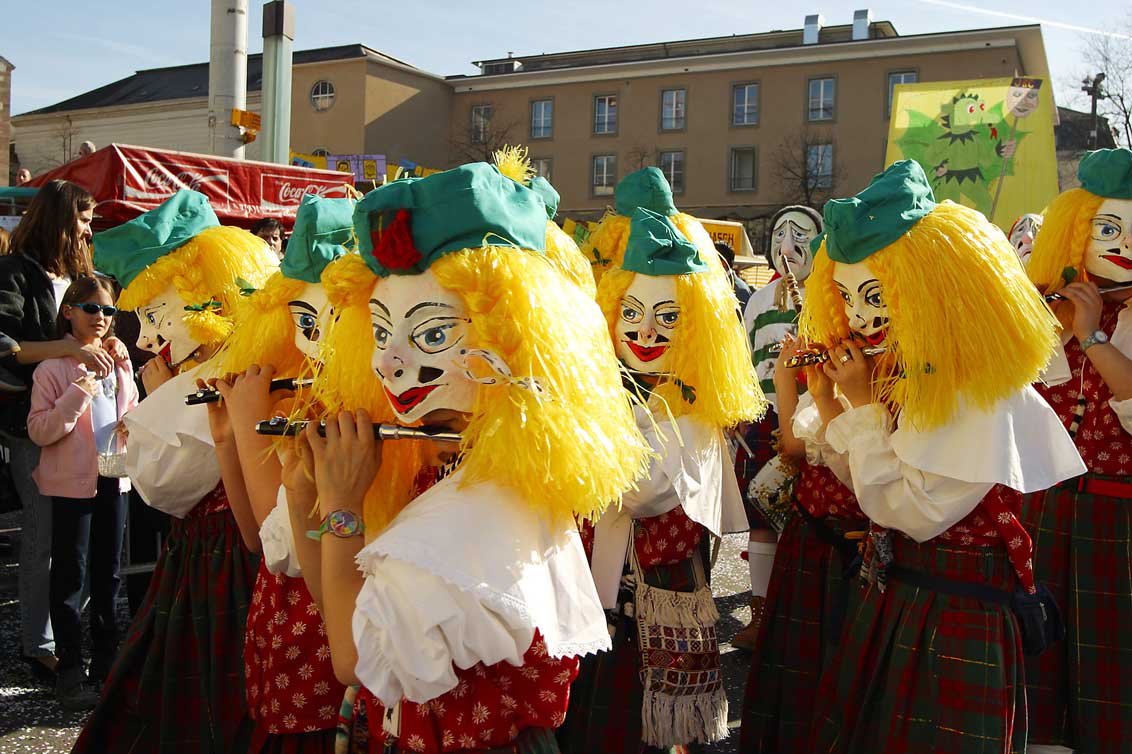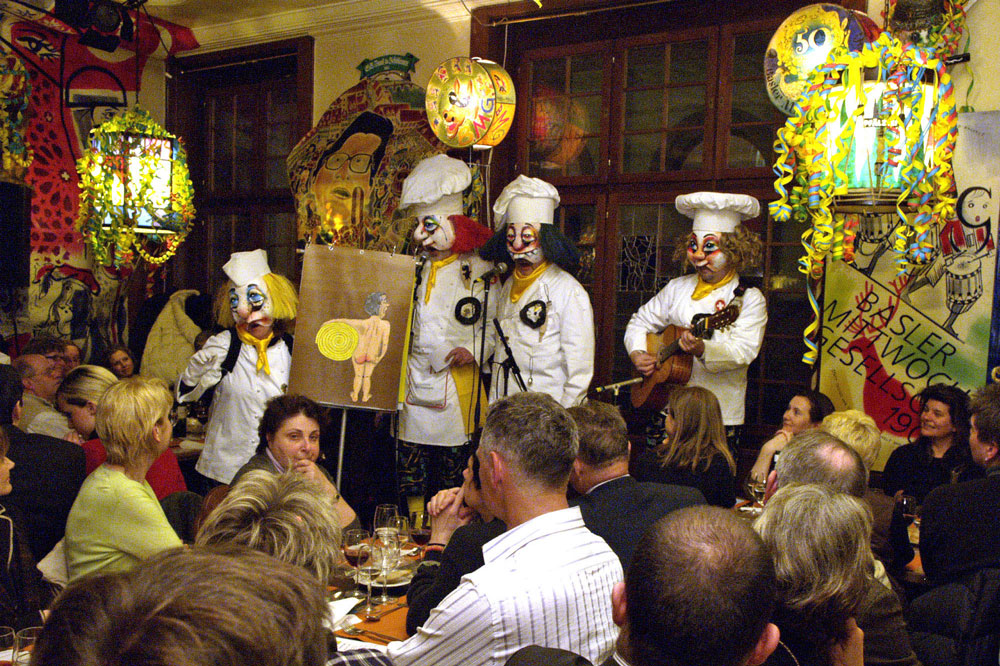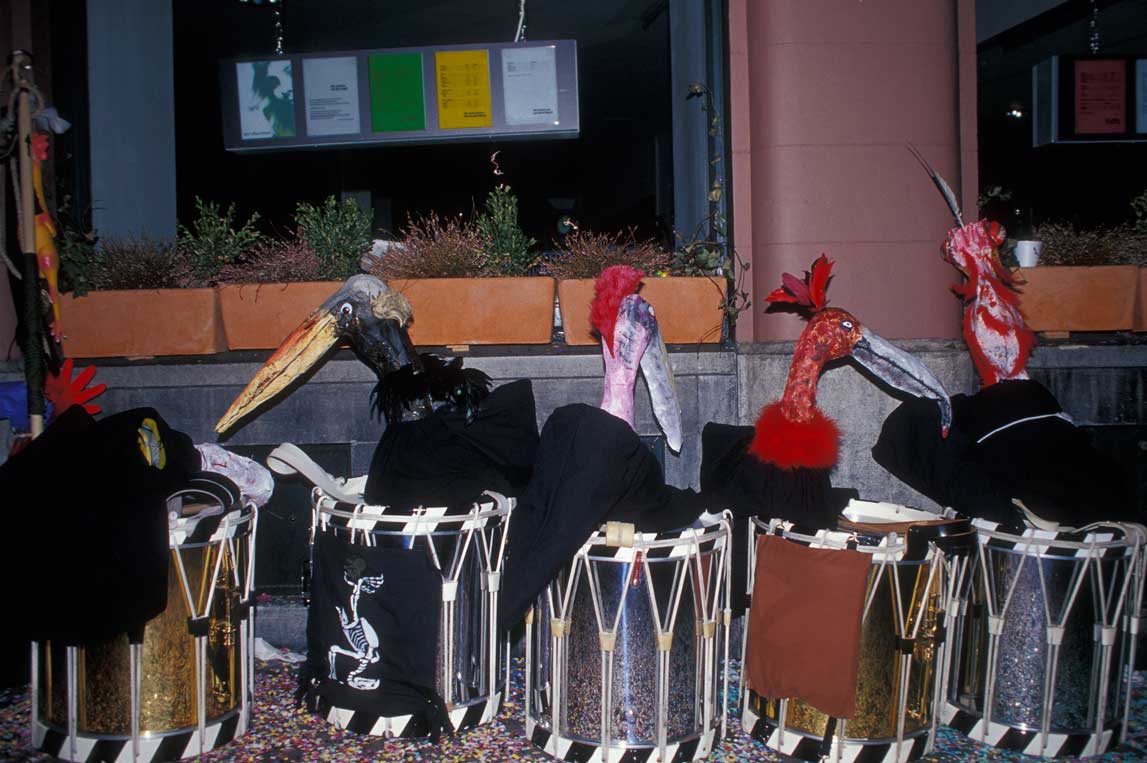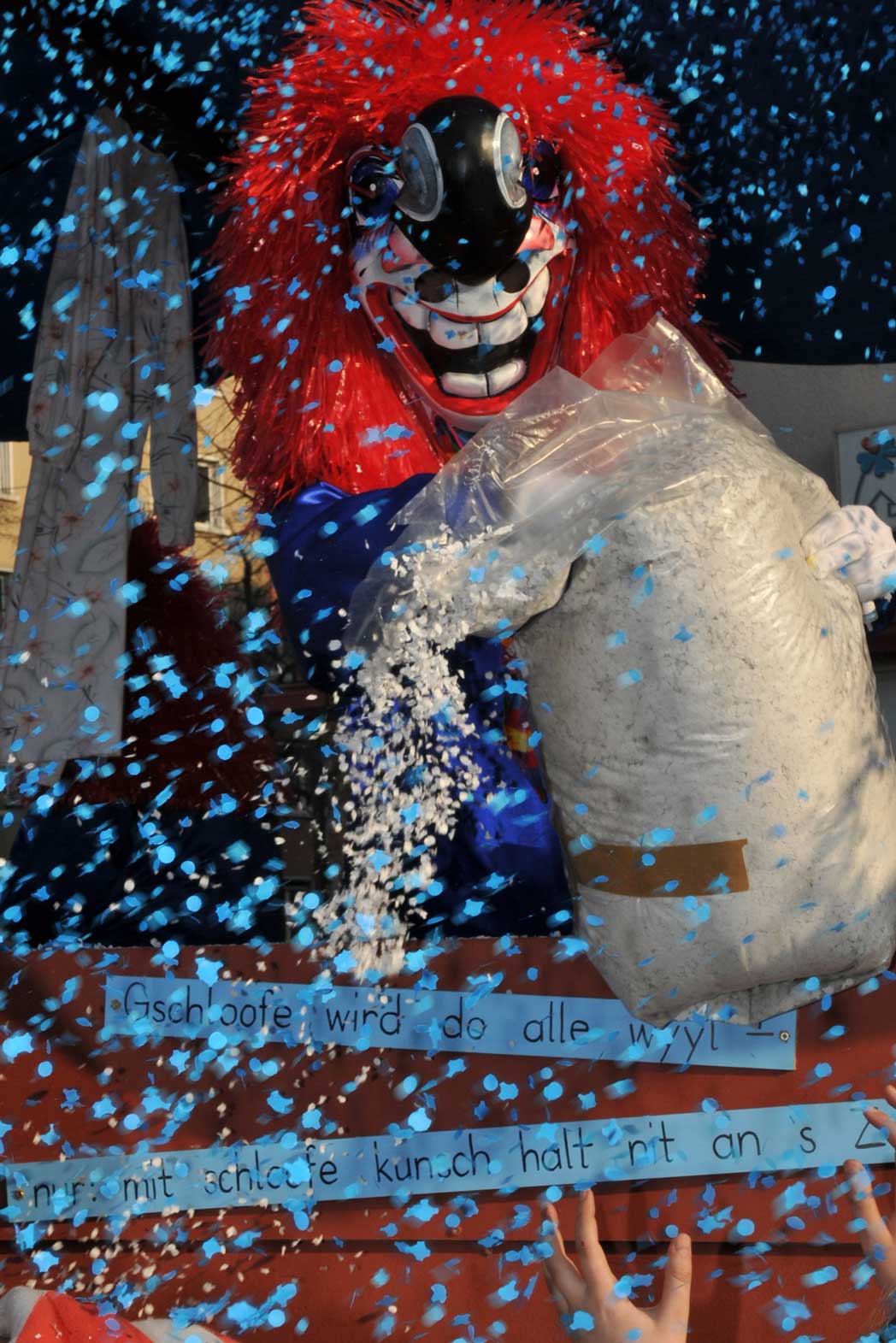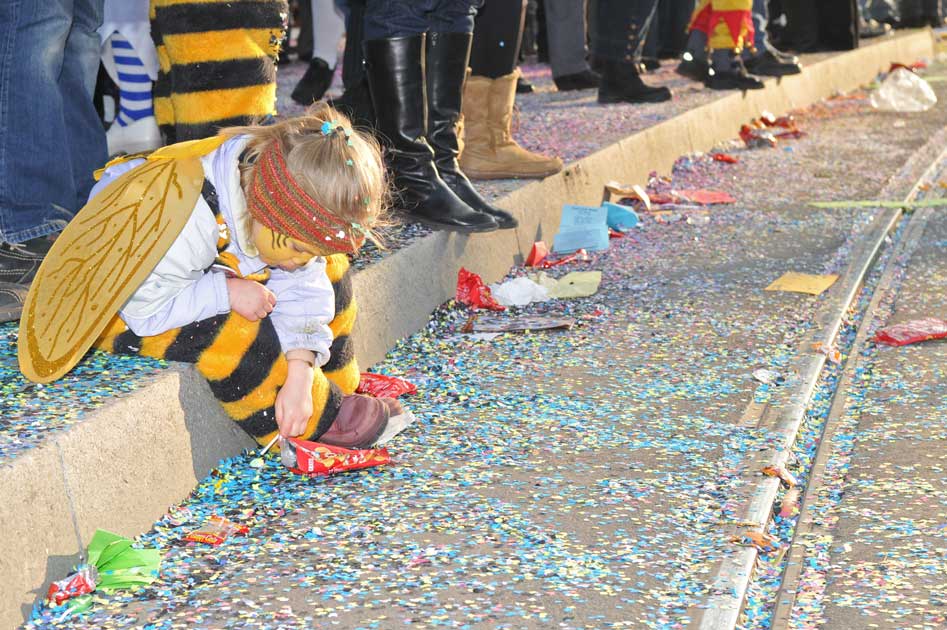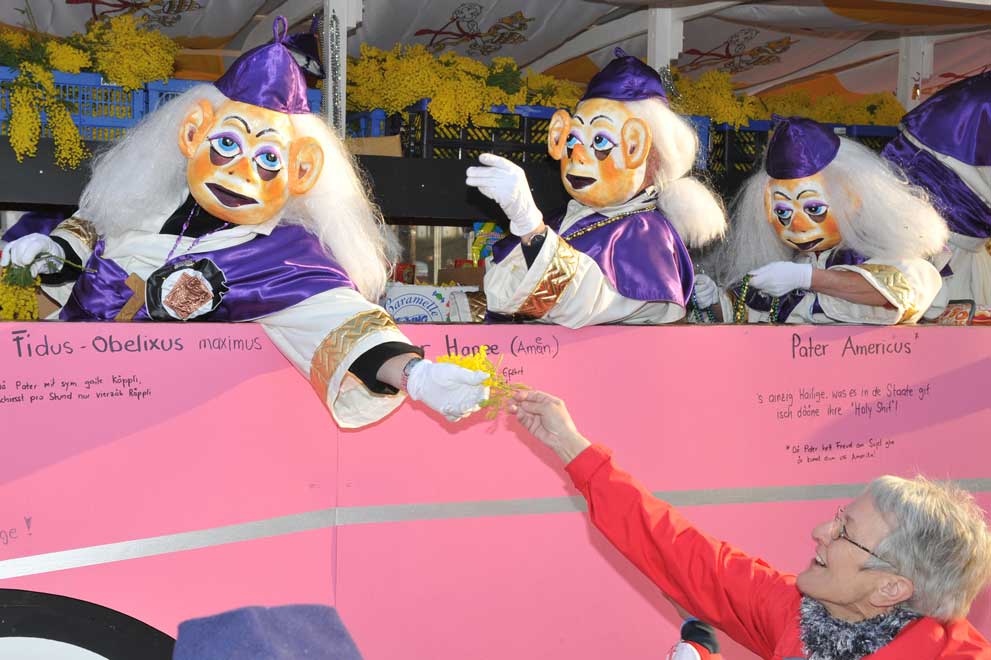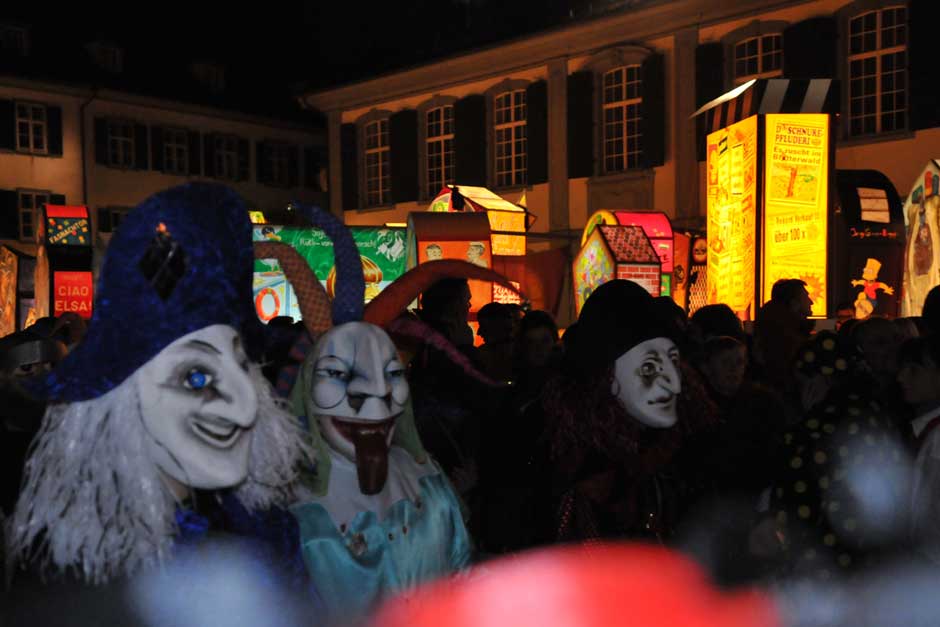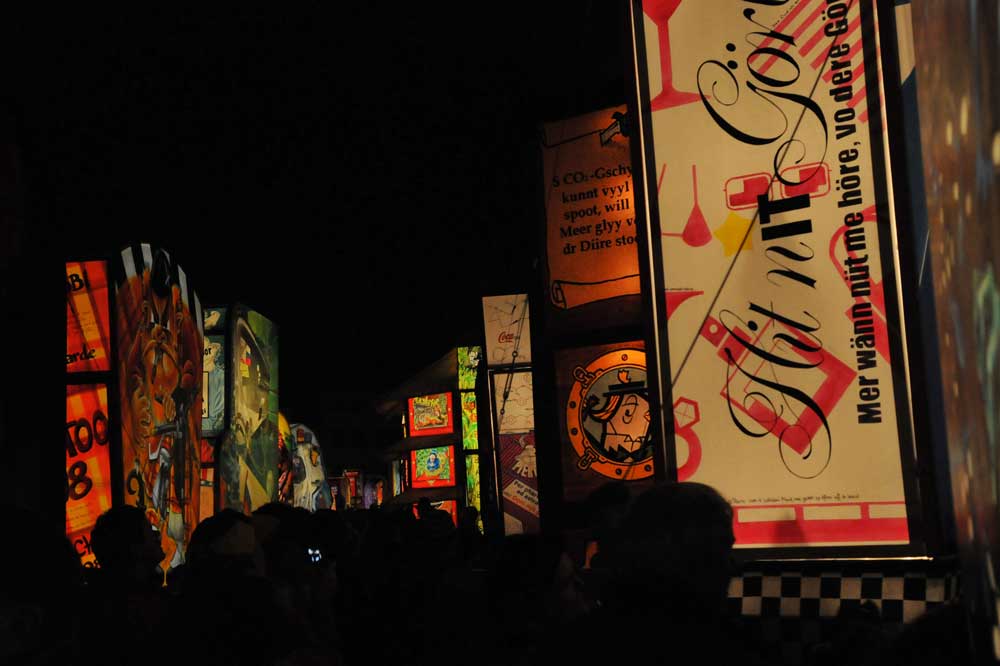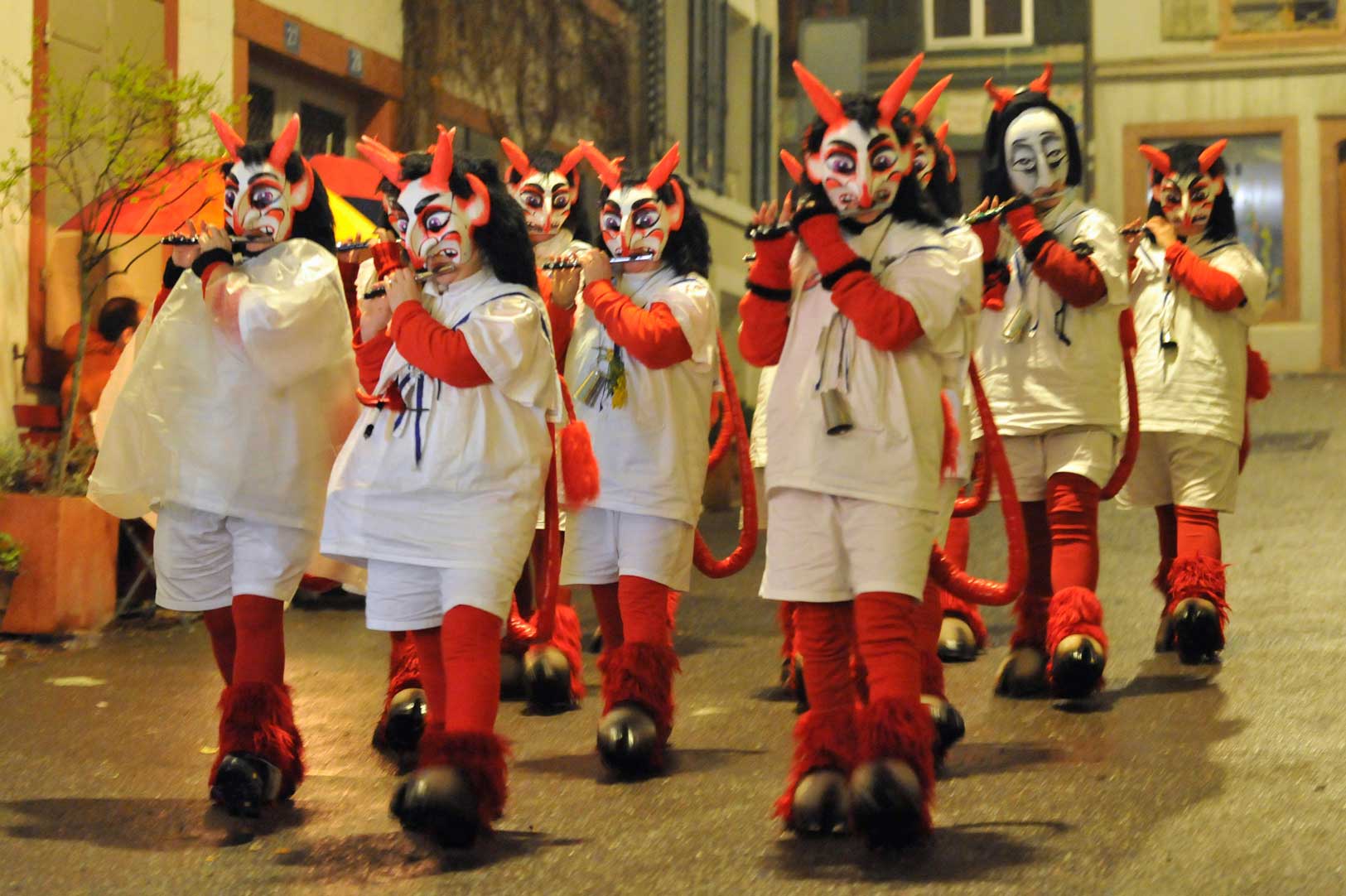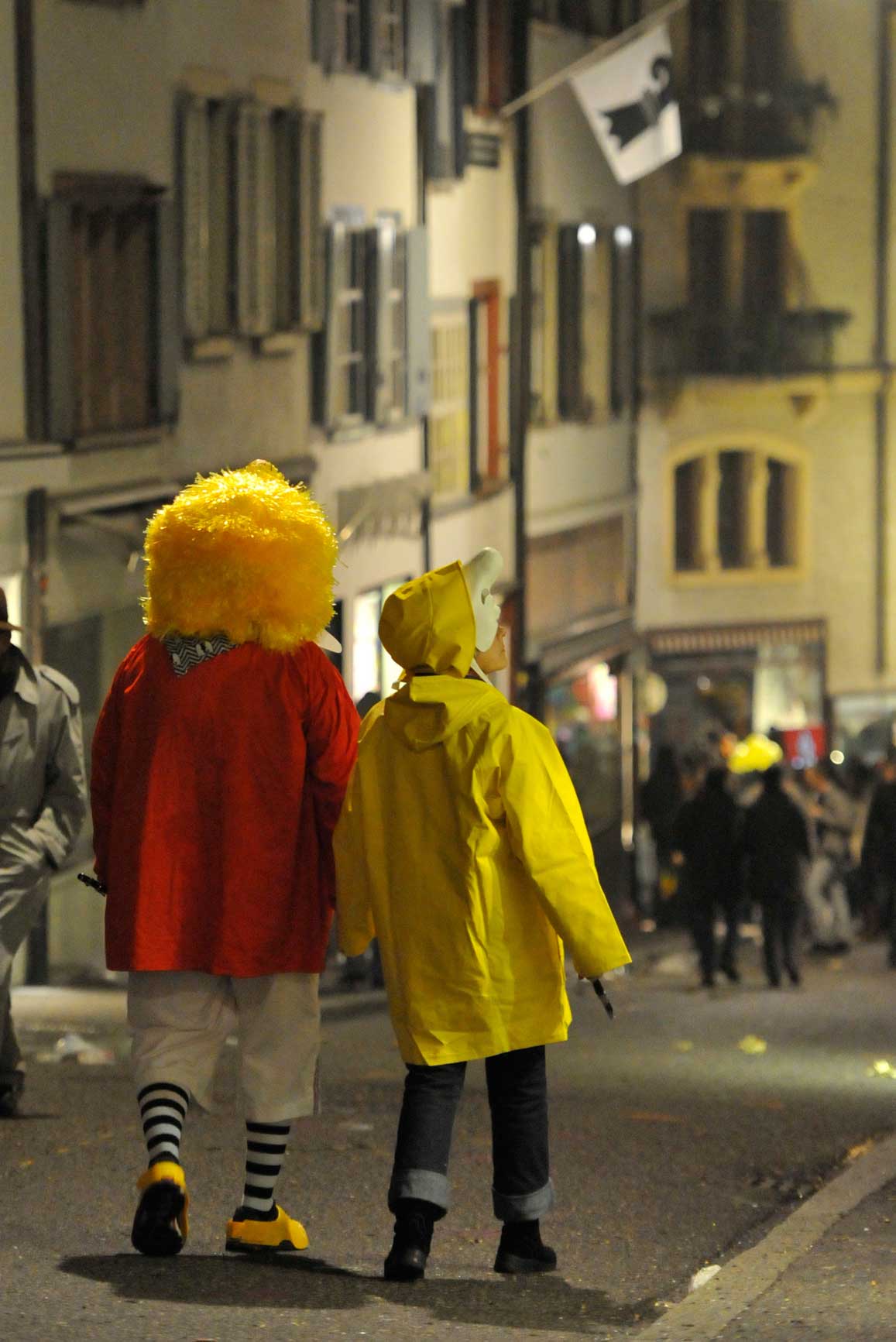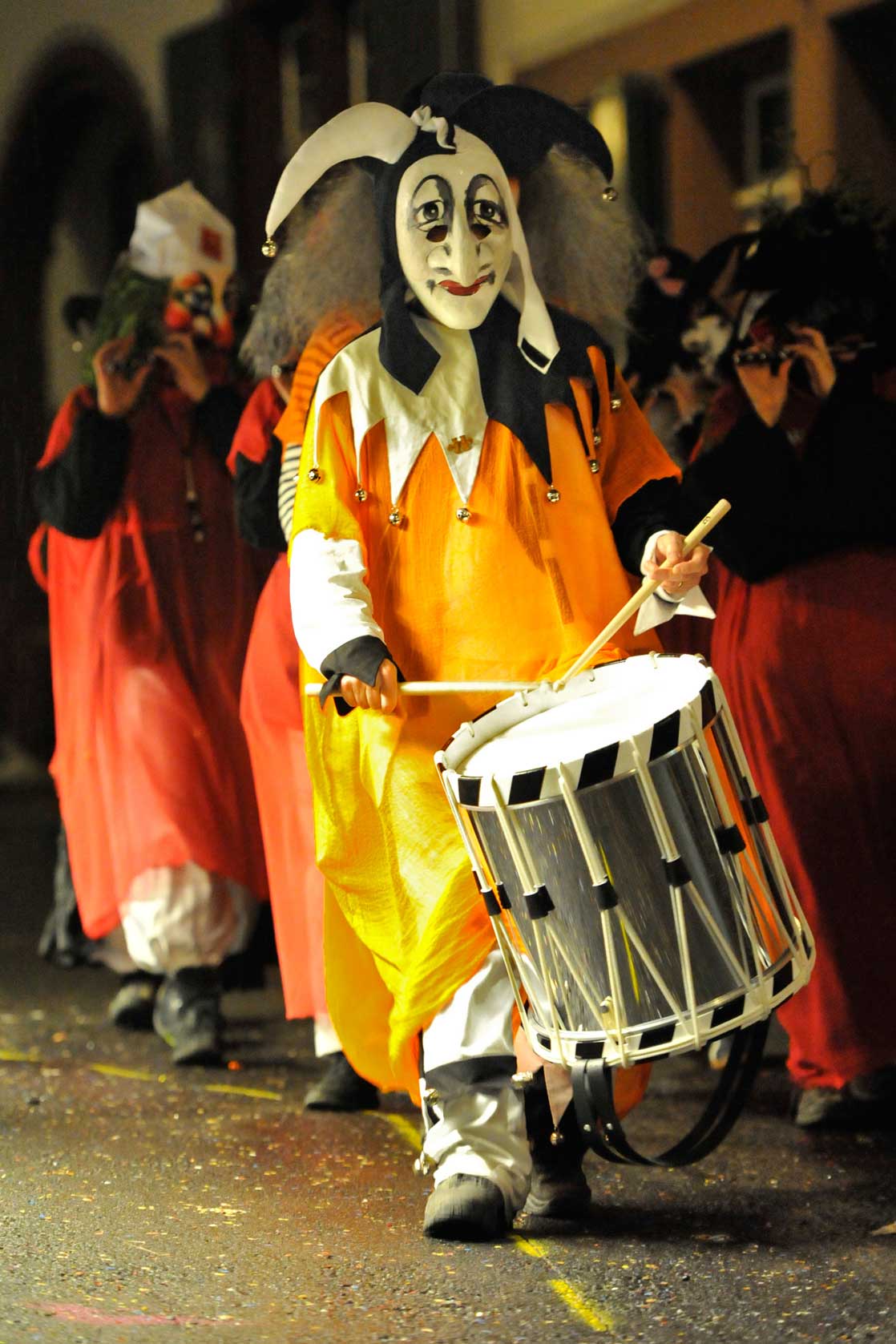*Inscribed on the Representative List of the Intangible Cultural Heritage of the UNESCO
A jousting tournament from 1376 is documented as the oldest carnival event in Basel. Since then, Basel's carnival has changed constantly. In its current form, the "drei scheenschte Dääg (the tree nicest days)", as the carnival is called in Basel, have a great impact far beyond the city. On the Monday after Ash Wednesday, Basel residents and visitors gather at four in the morning. It is eerily quiet in the completely dark city center before the drum major gives the marching order "Morgenstreich vorwärts marsch" and the costumed drummers and piccolo players open the carnival with their playing. On Monday and Wednesday afternoon, around 12,000 costumed participants in large parades display countless subjects. Tuesday belongs to the children's masquerade and the “Guggenmusik”. A very special role at Basel Carnival is played by the hundred or so “Schnitzelbank” groups, who recite their illustrated mock verses in the restaurants and cellars.
Detailed description
Basler Fasnacht (PDF, 442 kB, 04.06.2018)Ausführliche Beschreibung
Category
Oral expressions
Performing arts
Traditional craftsmanship
Canton
Video
Audio
Basel drumming
Contact
Sekretariat Fasnachts-Comité


